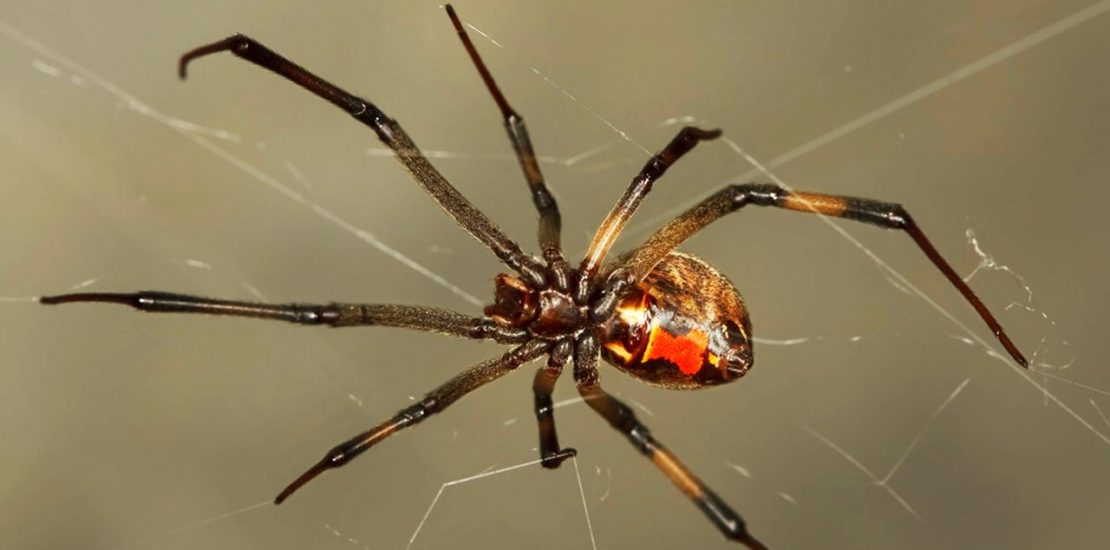Black Widows vs. Brown Widows
- August 22, 2024
- Posted by: arksidemarketing
- Category: Spiders

The warm climate of Riverside County and San Bernardino County provides a suitable habitat for several spider species, including the notorious widow spiders: the black widow and the brown widow. While both are venomous, understanding their distinct characteristics, habitats, and potential dangers is crucial for protecting yourself, your family, and your pets.
Black Widow Spiders (Latrodectus hesperus)
The black widow is perhaps the most recognizable spider in North America. Adult females are glossy black with a distinctive red hourglass marking on the underside of their abdomen. They are relatively large, with a body length of about ½ inch, not including their legs. Males are much smaller, brown, and often have red or white markings on their sides but are rarely seen. Black widows prefer secluded, undisturbed areas such as woodpiles, sheds, garages, under rocks, and in meter boxes. They build irregular, tangled webs in these protected spaces. Their diet consists primarily of insects, but they will also consume other arthropods. Black widow venom is a neurotoxin that affects the nervous system. A bite can cause immediate pain at the site, followed by muscle cramps, abdominal pain, nausea, sweating, and difficulty breathing. While bites are rarely fatal, they can be particularly dangerous for young children, the elderly, and those with weakened immune systems.
Brown Widow Spiders (Latrodectus geometricus)
The brown widow is a relative newcomer to the Inland Empire, but it has become increasingly common in recent years. They are typically light brown to grayish in color with black and white markings on their legs. They also have an hourglass marking on their underside, but it is often orange or yellowish and less distinct than the black widow’s. Their egg sacs are spiky, unlike the smooth, silken sacs of the black widow. Brown widows are more adaptable than black widows and can be found in a wider range of habitats, including urban areas, gardens, under patio furniture, and even inside homes. They often build their webs in more exposed locations. Similar to black widows, brown widows feed on insects and other arthropods. While brown widow venom is thought to be as potent as black widow venom, they inject significantly less venom when they bite. Their bites are often less painful and produce milder symptoms, typically limited to localized pain and redness. However, some individuals may experience more severe reactions.
Widow Spiders in Southern California and the Dangers They Pose
Both black and brown widow spiders are found throughout our area, thriving in the region’s warm, dry climate. It is important to be cautious when working in areas where they are likely to be found, such as garages, sheds, and gardens. For humans, black widow bites can cause significant pain and discomfort, although fatalities are rare. Brown widow bites are generally less severe. If bitten by either spider, it’s advisable to clean the bite area with soap and water and seek medical attention if symptoms worsen or become severe. Pets, especially smaller ones, can be more susceptible to the effects of widow spider venom. If you suspect your pet has been bitten, contact your veterinarian immediately.
Prevention and Control
To prevent widow spiders from establishing themselves around your home, eliminate harborage sites by removing clutter and debris from around your home, including woodpiles, rocks, and old tires. When working in areas where widow spiders are likely to be found, wear gloves and long sleeves. Regularly inspect potential harborage sites around your home for webs and spiders. If you have a significant widow spider problem, consider contacting a professional pest control service. They can safely and effectively eliminate spiders from your property.
Key Differences at a Glance
| Feature | Black Widow | Brown Widow |
|---|---|---|
| Color | Glossy black with red hourglass | Light brown/gray with orange/yellow hourglass |
| Egg Sac | Smooth, silken | Spiky |
| Venom Potency | Highly potent | Potent (but less venom injected) |
| Bite Symptoms | Severe pain, muscle cramps, systemic effects | Localized pain, milder symptoms |
| Habitat | Secluded, undisturbed areas | Adaptable, urban areas, gardens, inside homes |
By understanding the characteristics and habits of black and brown widow spiders, you can take steps to minimize your risk of encounters and protect your family and pets. If you have concerns about a spider infestation, call Craig & Sons at 909-335-1486 quickly.
